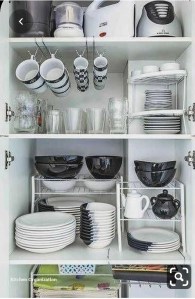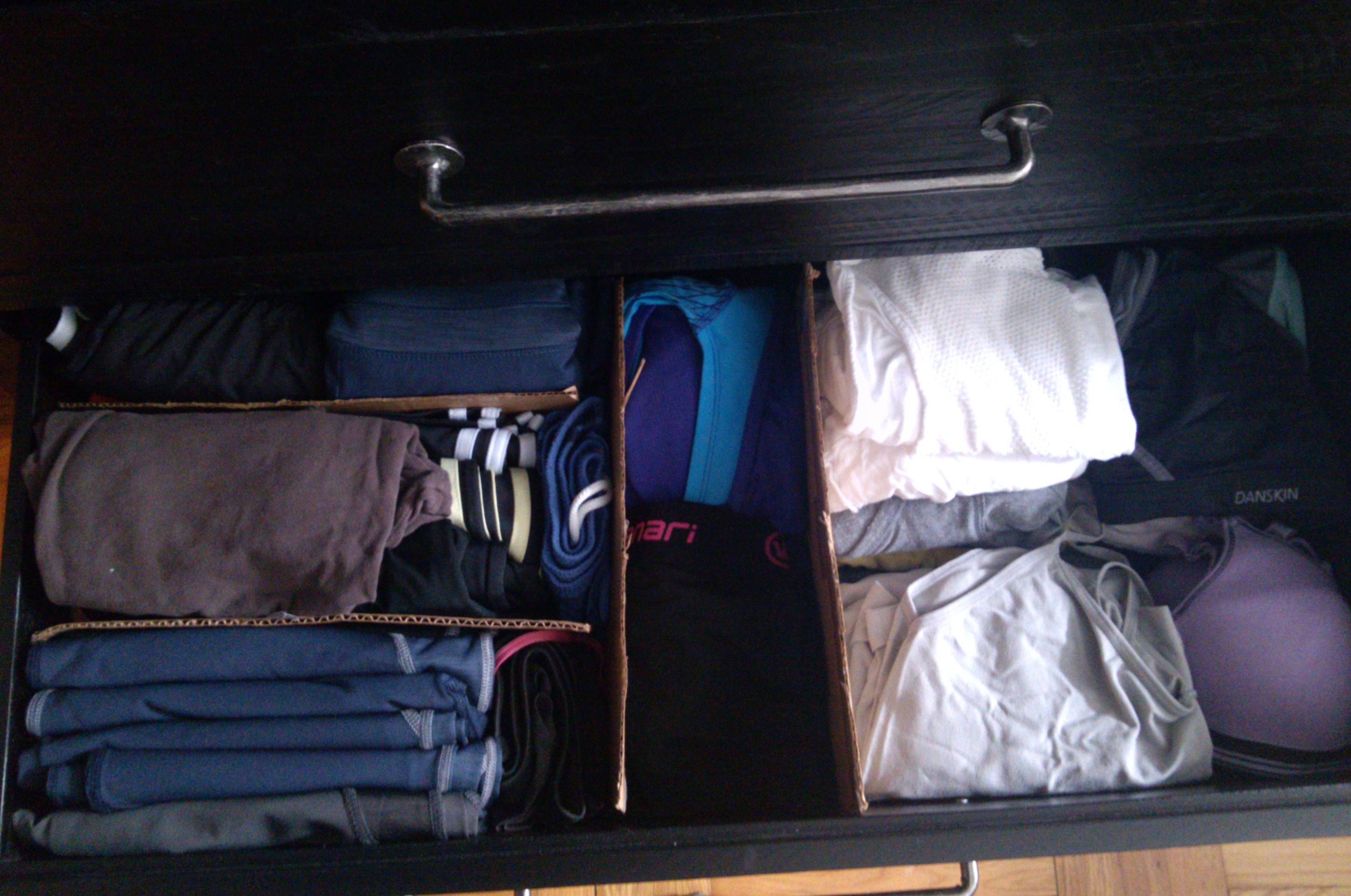Kitchen cabinets can be a challenge. First, most kitchens have a variety of fragile dishes and glasses that come in shapes that often do not fit smoothly inside rectangular cabinet spaces. Then there is the issue of aesthetics. Perhaps you have a matching set you would like to keep together. Maybe you only use that set on certain occasions. How do you store those 50 commemorative wine glasses from your best friend’s recent milestone birthday celebration? How do you create a cohesive aesthetic in your cabinet if you have a multiple incomplete dish sets? Check out the photo and instructions below for one way you can quickly organize your cabinet with minimal fuss. Need to know where you can purchase the necessary tools? Click on the links in the supply list to order from Amazon using my affiliate code (I will receive a small commission, but the price of each item will remain unchanged – thank you!).

Supply List:
- Stainless steel under-cabinet cup rack (2)
- 3-Tier kitchen corner cabinet shelf
- Stackable kitchen cabinet shelves (set of 2) [I chose a sturdier version of stackable shelves than the ones pictured in the photo]
How To:
- Insert mug hooks into the cabinet by attaching each row of hooks to shelf above space in which you would like to position your mugs. You can expect to store about four medium-sized mugs on each row of hooks.
- Position glasses for maximum visibility. Place taller glasses on the outside edges of the cabinet space. You can also substitute tall glasses for additional mugs nested together or short glasses from a matching set stacked to make a taller pile.
- Next, arrange all remaining glasses from left to right in order of height, shortest to tallest (see photo).
- Assemble the corner cabinet shelf, and place it in the far right corner. Place stacks of small plates underneath and on the middle row of the two-tier corner shelf. Place smaller items like ramekins on the very top of the shelf.
- Assemble your two sets of stackable kitchen cabinet shelves, and place them adjacent to each other on the next lowest empty cabinet shelf.
- Stack your plates together according to matching sets (or as desired), and place them underneath and in front the stackable shelf on the left. Place larger bowls on top of the stackable shelf. If you have a set of smaller bowls, stack them, and place them in front of the stackable shelf.
- Arrange remaining plates, bowls, and any specialty dishes on the remaining stackable shelf on the right similar to photo.
Note: If you have sets that do not match or dishes you use infrequently, position these directly underneath the the stackable shelf as they will be slightly less accessible and less visible than the dishes you place in front.


